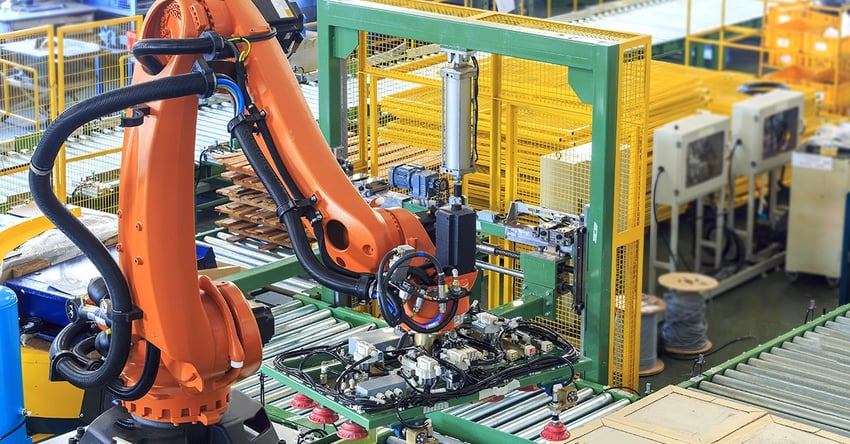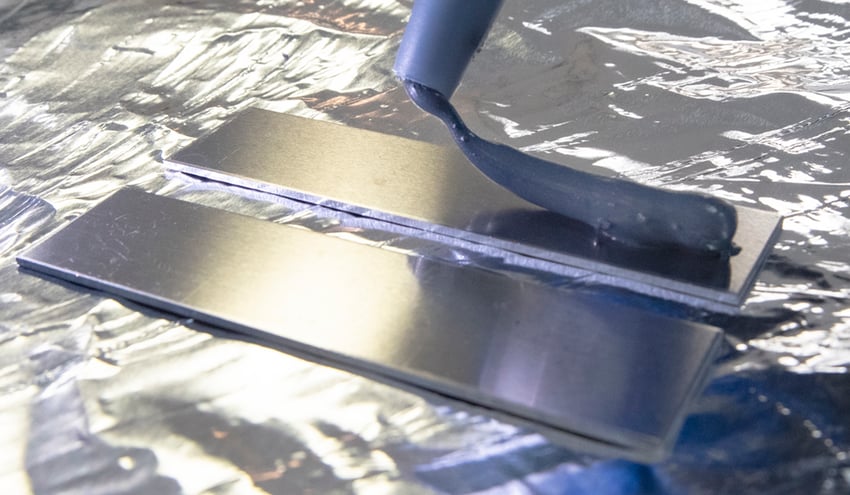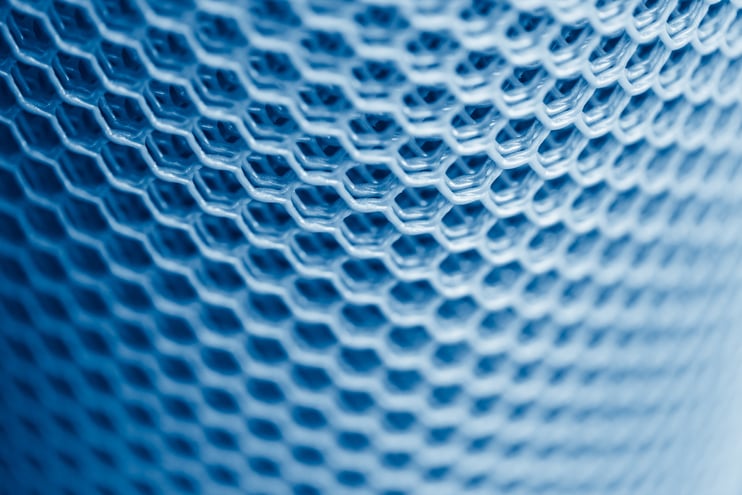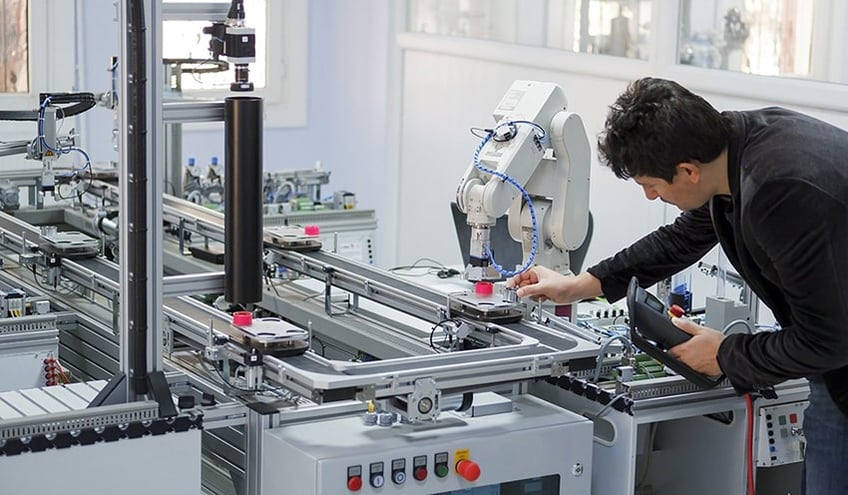As an increasing number of manufacturers adopt the fundamental principles of Industry 4.0, they are reaping the rewards of its key concepts. These include the integration of systems and processes, information transparency, and the commercialization of smart technology. This, in turn, promotes a more efficient and cost-effective manufacturing process across various industries. The outcome is enhanced productivity and ROI, coupled with better quality control and decreased expenses.
This holds true in new product development processes as well. As new product ideas are being developed, production teams are looking at the various manufacturing processes and quality control systems that must be integrated to ensure optimal productivity and consistency. In addition, checkpoints established throughout the production process help ensure that any potential problems are caught early and resolved to avoid expensive delays, waste, and rework further down the line.
Anticipating potential issues can prove challenging during New Product Development (NPD) for products where surface quality is crucial. Such products include those that necessitate the use of adhesives, paints, sealants, coatings, inks, and cleaning agents. While structural design and manufacturing process concerns can be relatively straightforward to pinpoint and address, mitigating factors can subtly yet significantly impact surface quality. These factors may not become apparent until later in the production cycle, making them more difficult and expensive to rectify.
This is why product development teams must identify the critical stages in the product lifecycle where material surfaces can affect the final product's functionality and performance. Neglecting to prioritize surface quality during quality assurance and quality control can result in extensive troubleshooting, wastage, and rework.
To avoid such a scenario, including a surface intelligence methodology at the front end of the product development process and adopting digital surface inspection controls is advisable.
Struggling with adhesion failures? Been there. Solved that.
How Does Surface Quality Positively Affect Product Performance?
From the earliest stages of the product concept, NPD teams should be thinking, “How does surface quality positively affect product performance, and how do we preserve that?”
Product design is often done iteratively, but sometimes product performance is not clearly defined throughout the process. To help ensure that surface quality is maintained throughout the product development lifecycle, it should be analyzed any time:
- Materials for bonding are changed
- Adhesives/coatings are changed
Product performance parameters are revised
Surface intelligence should always be upfront in the product development strategy because it is a crucial factor in achieving optimal product functionality and performance. But in many cases, it’s simply not on the radar, to the detriment of the product.
New Technology Selection for Continuous Improvement
A key component of Industry 4.0 is Design for Manufacturing (DFM) which is improving or optimizing a product in the development plan phase where it can be done more efficiently and at a lower price point. The fuel that drives the DFM engine is data, which is needed to identify, analyze, and resolve issues early in the product development lifecycle to prevent more significant problems later when the product enters manufacturing.
Technology selection plays a big role in DFM. Selecting the right tools and integrating them into the production process can be the deciding factor in a successful product. For example, suppose a potential problem with surface quality is identified. In that case, there may be several viable courses of action: perhaps a step needs to be added to improve surface prep, such as plasma treatment or improved washing, or a current process needs to be tweaked for higher quality output; a third option might be to change materials.
Appropriate surface quality data provided by a surface intelligence platform is vital for choosing a new process, revising existing procedures, and validation. When the choice is influenced by factors such as regulatory compliance or cost-benefit, data not only enables you to confirm that an alternative process is equivalent or better than the current one, but it also helps reduce risk.
Accurate and reliable surface intelligence data plays a crucial role in decision-making for selecting new processes, revising existing products, and validation. In scenarios where factors like regulatory compliance or cost-benefit come into play, data not only confirms the efficacy of an alternative process but also mitigates the associated risks. This is why it is imperative to prioritize acquiring such data and metrics to ensure informed and successful decision-making.
Optimize the power of next-gen connectivity with data & surface intelligence.
Digital Transformation in Product Management and Process Design
In the realm of Design for Manufacturing early-stage optimization and ideation, digital twinning has emerged as a critical technology tool. This involves digitally replicating the entire production process in a virtual format, allowing for the creation of a digital twin that can be used for concept testing, manufacturing feasibility, and areas for optimization. Essentially, it provides a flexible digital version of the factory, enabling you to model production and change elements and parameters to assess the impact on manufacturing. However, it's worth noting that surface intelligence, like surface characterization, is often overlooked. Without this data, surface quality can remain unknown, leading to potential stumbling blocks throughout the product launch and ultimately producing an inconsistent, poor end product.
To minimize potential risks, businesses that employ a DFM approach will make use of Design Failure Mode and Effects Analysis (DFMEA). This technique is employed to detect and evaluate potential hazards related to new product development and manufacturing at an early stage to facilitate timely mitigation, thus preventing excessive expenses as the program progresses.
DFMEA is highly useful for gaining an accurate understanding of critical surface quality, enabling appropriate controls to be developed to manage it. In addition, by incorporating it early in the product development cycle, design risks are identified, which, if left unattended, could fail.
DFMEA is applied when:
-
There is a new design with new content
-
There is a current design with modifications, which also may include changes due to past failure
-
There is a current design being used in a new environment or change in duty cycle (no physical change made to design)
Current risk models around cleanliness and surface prep are generally vague and incomplete. They might identify a need for a surface to be “shiny and smooth,” but they lack specific, qualitative, and experience-driven metrics that enable a material’s surface to be accurately assessed. The results can be deceptive because only the need for certain surface characteristics is identified, not what those specific characteristics are. Simply identifying the need for a surface to be “shiny and smooth” is not useful. However, stating that a surface needs to have an average surface roughness (RA) value of X is. Once again, producing accurate surface-quality data is critical.
How to Add Surface Intelligence to the Product Lifecycle
Surface intelligence data drives decision-making throughout the product development and manufacturing lifecycle, including:
Prototyping New Products
In the world of prototyping, surface intelligence holds immense importance as it dramatically influences design decisions based on the prototype's performance. However, transitioning from prototyping to production can be challenging, especially when it comes to ensuring a surface is well-prepared for an adhesion process like bonding, sealing, painting, printing, or coating. This is primarily due to the differences in the tools used for preparing surfaces in these two environments. For example, while washing a prototype part in a beaker may suffice, it cannot be relied upon for an industrial-stage cleaning process necessary in a manufacturing setup. Therefore, accurate surface intelligence data becomes critical in making informed design decisions. This stage is crucial as it can significantly impact the quality and price of manufacturing the final product. Therefore, ensuring the accuracy of surface data is of utmost importance in delivering high-quality content.
Product Testing
When product design teams face a substandard prototype or minimum viable product (MVP) performance, incorrect decisions can be made about the root cause of the poor performance without crucial surface intelligence data. For example, our barcode scanner customer changed one of the substrate materials used in a popular product already being produced. They built a prototype, tested it, and it failed product performance. Because they did not have surface intelligence data, they did not know if the poor surface quality was the root cause and instead started looking at how they could change the product form factor to reduce stress on the adhesive. Changing the form factor could adversely affect the user experience and jeopardize product sales, all because they lacked critical surface intelligence data.
Process Design and PFMEA
In Process Failure Mode and Effects Analysis (PFMEA), the most crucial objective is to maximize process reliability and adequately assess the risks associated with a process not performing as intended. Because of a lack of awareness, we have found that innovation teams often underestimate the risks involved in bonding, coating, cleaning, or painting, which can be more significant than they realize. As a result, failures occur more frequently than anticipated. It is imperative to monitor surface quality and implement production process controls to better understand the frequency and seriousness of surface quality problems.
Industrialization
This is the step in which the process design is transitioned to the plant floor, and the product begins to be manufactured at a speed, quality, and cost that is economical. Any bugs left in the system will shake out here. This can be very stressful for the product design team, which may have to make disruptive design changes to the product to help resolve any remaining manufacturing process issues. At this point, they cannot make form factor changes but can make other changes to improve the manufacturing process.
Often the product does not meet one of the three defined criteria of cost, speed, or quality. As a result, the manufacturing process may be tweaked to improve one without affecting the other. If product quality needs to go up to meet specifications, it needs to be done without increasing the cost. If there are performance issues related to bonding, painting, or coating, without surface intelligence data, you won’t know if you need to improve the surface or process. Or, you won’t know if changes you make to improve performance will increase costs. If a process costs too much, you want to know if it changes surface quality. By making changes in one of the three criteria, you can negatively affect the other two. Accurate data can help resolve these issues more effectively and cost-efficiently.
Product Release
Before product release, testing is generally done in-house using a surrogate to replicate and validate the user experience. Sometimes, however, surrogate testing fails in some way, and a less-than-optimal user experience results. Appropriate surface intelligence data can reveal if the problem results from poor coating, bonding, or cleaning.
Supplier Quality
Component sourcing can be daunting, especially if different vendors are used. For example, various sub-components might be used for the test build and scaled-up production. If you suspect changes in quality, having accurate surface intelligence data can help determine the differences between vendors and inform any decisions about necessary adjustments.
Process Control and Optimization
Process control at this stage primarily prevents defect escape and significant production disruptions. Predictive indicators can help guide adjustments and corrective actions before defects develop and escape your process. Using a surface intelligence platform, you can acquire and share critical surface quality data to make decisions and reduce adhesion-related failure.
Despite the backseat that surface quality often takes, surface intelligence is a critical tool manufacturers can use to streamline and optimize product development and production. Surface intelligence enables cost-savings, process optimization, improved product performance reliability, helps drive continuous improvement, and faster time to market.
Learn how to equip your manufacturing processes with surface intelligence, the secret to providing your company with a significant competitive advantage. Download our eBook to learn more: The Advanced Guide to Transforming Product Development Through Surface Intelligence Data & Technology.

















